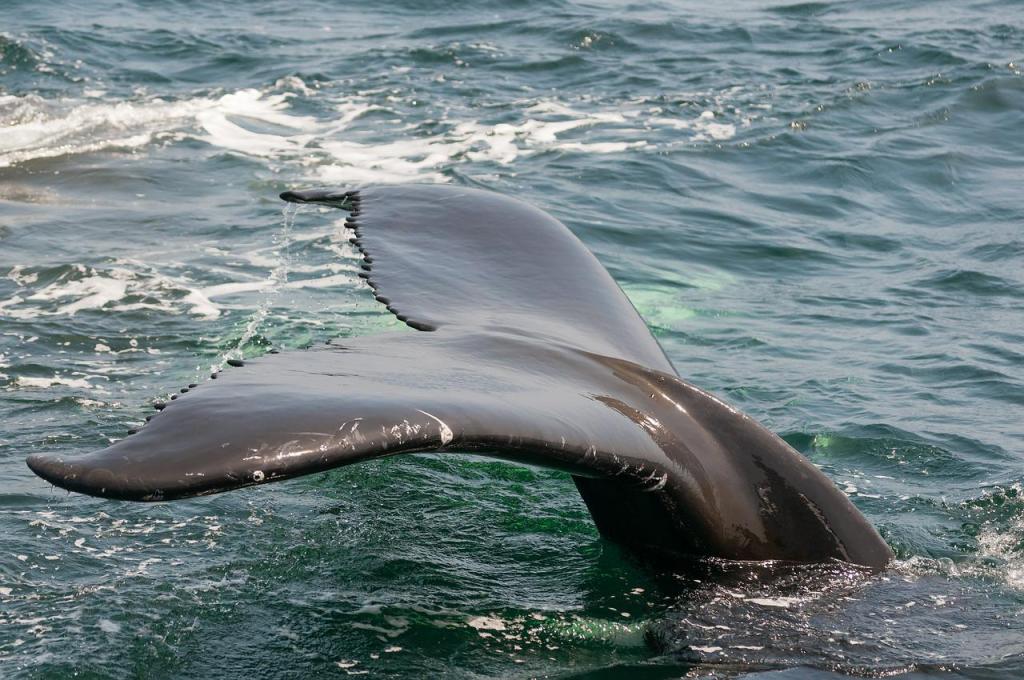How long do whales live? Whales have some of the longest life spans in the mammal kingdom. In fact, several whale species have been recorded to live over 100 years old! Which whale lives the longest? Do captive whales live longer than their wild counterparts? How can we calculate the age of wild whales? Let’s find out together.

Who lives longer? Baleen whales or toothed whales?
Interestingly, larger baleen whales seem to live longer than their smaller, toothed counterparts. The bowhead whale especially is the longest living whale; scientists estimate the oldest individual to be over 200 years old! It is difficult to say exactly what allows these whales to live so long. Researchers have found certain genetic mutations that help repair damaged DNA. In fact, these whales can repair their damaged DNA faster than other species, which allows them to prevent cancers and live longer. However, other factors could include exclusively living in arctic waters, their excessively large mouths, or something else entirely.
Whatever the case, it means this individual could potentially remember what the ocean was like before the industrial revolution. Imagine how quiet it must have been…

How do you determine the age of a whale?
Multiple things can determine how long a whale may live, including genetics, habitat, geography, diet, lifestyle, and level of endangerment. Whales are notoriously tricky to track down and study. Some, however, like the southern resident killer whales or the Sarratosa bottlenose dolphins, live close to shore year long. Scientists can thus monitor the age of the individuals in the population through photo identification.

But when whales migrate and are far from us, we may need other methods to determine their age. With updated technology, monitoring tags can track individual whales, sometimes from birth, and follow their movement and growth. Many of our best estimates for whales’ age come from growth equations. To determine them, researchers need to measure a whale’s growth throughout its lifetime and calibrate the equations. Scientists today can measure an individual’s growth using drones, which is much less invasive than some older methods. For example, growth equations for gray whales were developed from historic whaling data.
When the animal is already dead
Some methods only work with samples from an already dead specimen. For example, a 2013 study was able to identify different stressors over a blue whale’s life by studying their earwax or earplug. Like studying the rings of a tree, scientists can break down these plugs into six-month intervals and identify chemical exposure and other stresses the whale went through during that period in their life. This technique allows researchers to determine the age of the whale and possibly even the cause of death!
New methods using molecular tools
Similarly, some scientists are attempting to standardize a method to determine age from whale blubber. Blubber is the thick layer of fat over muscle tissue that keeps whales warm and stores extra energy. Scientists can collect small, minimally invasive samples in field studies. However, because every whale species has a different fatty-acid composition in their blubber, these studies could be done across all cetaceans. However, this method still needs to be validated.
Scientists are continuously attempting new methods to determine the age limits of cetaceans worldwide. For example, looking at the small modifications in the DNA of whales could help us determine their age: it’s called epigenetics. Research is still underway but could bring us a new method to age whales soon.
In captivity vs. in the wild, the heated debate
Today, few establishments keep whales in captivity. Killer whales are the largest marine mammals in captivity. In the wild, they live about as long as humans. Wild females have been recorded to live beyond 90 years and males 60 years. In the past, however, some marine aquaria have claimed that killer whales only live 25-35 years. Why is there such a staggering difference in these age ranges?
It is because 25-35 years is the average lifespan of killer whales in captivity (although scientists are arguing and this age is still up for debate). The fact is that quite a lot of captive whales die in their tanks before reaching old age. When whales are held in tanks, as opposed to alternatives like open ocean pens or their wild range up to thousands of miles, they suffer emotionally and are often deprived of environmental stimulation.

Very few other species are kept in as constricting conditions as killer whales. It is safe to say that any species of dolphin or whale are probably better off kept in the wild instead of being captured for human entertainment. However, we do recognize the utility of true sanctuaries and their ability to help marine mammals that would not survive in the wild.
So what did you think? How does your favorite whale rank on the lifespan timeline? Come check out our other posts on whale biology:
Got balls? Not like the Southern Right Whale!
Brianna has a background in marine biology and currently works as a live-aboard deckhand/educator at the Los Angeles Maritime Institute (LAMI). Her research interests include ocean conservation, specifically in the high seas and polar regions, and identifying marine mammal vocalizations in the global soundscape. She is passionate about music and can’t write without coffee.





